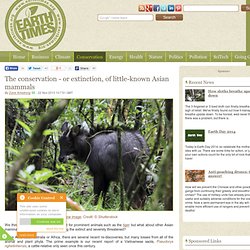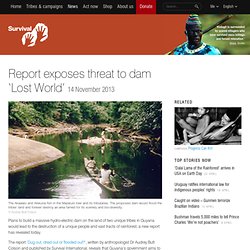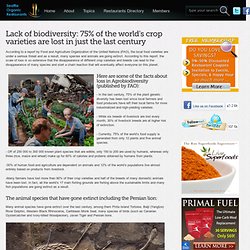

The conservation - or extinction, of little-known Asian mammals. Serow image; Credit: © Shutterstock We think our encyclopaedia is important for prominent animals such as the tiger but what about other Asian mammals we never hear about, including the extinct and severely threatened?

In the Americas, Australia or Africa, there are several recent re-discoveries, but many losses from all of the animal and plant phyla. The prime example is our recent report of a Vietnamese saola, Pseudoryx nghetinhensis, a cattle-relative only seen once this century. Basically, a new species, as it was only known to the scientific world in 1937, the kouprey, Bos sauveli, is another, but giant species of forest cattle.
The species is thought extinct now, but a faint chance of survival exists in war-weary Cambodia. Herds of up to 20 existed, though the numbers had been cut down terribly by military and local hunters to an estimated low of only 50! Some Asian bovids survive a little better than our first two examples. The Asian mammals survive only with help. Report exposes threat to dam 'Lost World' The Akawaio and Arekuna fish in the Mazaruni river and its tributaries.

The proposed dam would flood the tribes' land and forever destroy an area famed for its scenery and bio-diversity. © Audrey Butt Colson Plans to build a massive hydro-electric dam on the land of two unique tribes in Guyana would lead to the destruction of a unique people and vast tracts of rainforest, a new report has revealed today. The report ‘Dug out, dried out or flooded out?’ , written by anthropologist Dr Audrey Butt Colson and published by Survival International, reveals that Guyana’s government aims to push ahead with one or more dams on the Upper Mazaruni River, which would flood out the entire Akawaio indigenous people and an Arekuna community. Guyana’s government has shrouded the project in secrecy. The government has failed to obtain the indigenous peoples’ free, prior and informed consent, as required by international law, and the tribes have expressed their vocal opposition to the project.
Lack of biodiversity: 75% of the world's crop varieties are lost in just the last century. According to a report by Food and Agriculture Organization of the United Nations (FAO), the local food varieties are under a serious threat and as a result, many species and animals are going extinct.

According to this report, the scale of loss is so extensive that the disappearance of different crop varieties and breeds can lead to the disappearance of many species and start a chain reaction that will eventually affect everyone on this planet. - In the last century, 75% of the plant genetic diversity has been lost since local farmers and food producers have left their local farms for more industrialized and high-yielding varieties. - While six breeds of livestock are lost every month, 30% of livestock breeds are at higher risk of extinction. - Currently, 75% of the world’s food supply is generated from only 12 plants and five animal species. -30% of human food and agriculture are dependent on animals and 12% of the world’s populations live almost entirely based on products from livestock. REDD.